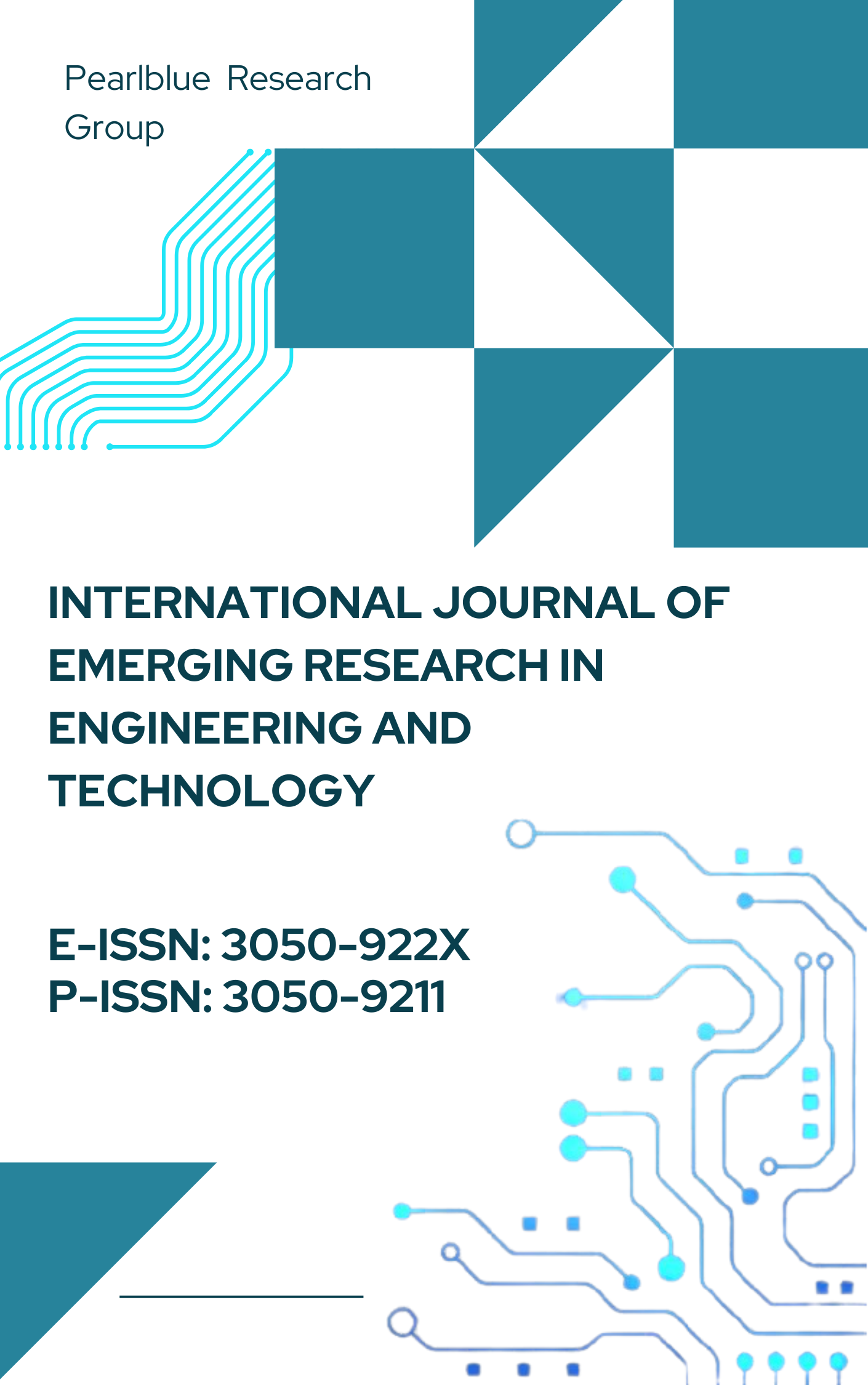Intelligent Threat Detection in Cloud Environments Using Data Science-Driven Security Analytics
DOI:
https://doi.org/10.63282/3050-922X.IJERET-V2I2P105Keywords:
Cloud Threat Detection, Data Science–Driven Security Analytics, AI/ML in Cloud Security, Behavioral Analytics in Cloud Environments, User and Entity Behavior Analytics (UEBA), Indicators of Attack (IOAs)Abstract
The convergence of cloud computing, cybersecurity, and data science has reshaped how organizations approach threat detection. Traditional rule-based systems fail to scale in dynamic, distributed environments where threats evolve rapidly and telemetry volume is immense. This paper explores how machine learning and data science techniques are redefining intelligent threat detection across cloud platforms. It presents a comprehensive review of cloud-native attack vectors, data analytics pipelines, and real-time monitoring strategies, while integrating foundational research and emerging innovations. By evaluating use cases, model deployment techniques, and privacy-enhancing architectures, the study aims to guide the development of scalable, proactive, and intelligent security systems in multi-cloud environments
References
[1] R. Chandrasekaran, “Cloud Security Analytics: Leveraging AI for Cyber Threat Detection”, International Journal of Cloud Applications, 2021.
[2] M. Ahmed, A. N. Mahmood, J. Hu, “A survey of network anomaly detection techniques”, Journal of Network and Computer Applications, 2016, 60, 19–31.
[3] J. Lin, W. Yu, N. Zhang, X. Yang, H. Zhang, W. Zhao, “A Survey on Internet of Things: Architecture, Enabling Technologies, Security and Privacy”, IEEE Internet of Things Journal, 2017, 4 (5), 1125–1142.
[4] Capital One, “What We Learned from the 2019 Breach”, Capital One Blog, 2020. https://www.capitalone.com/about/newsroom/2019-data-incident/
[5] Google Cloud, “Chronicle Security Analytics”, 2021. https://cloud.google.com/chronicle
[6] Amazon Web Services, “Security Hub”, AWS Documentation, 2021. https://docs.aws.amazon.com/securityhub/
[7] Kanani, Ishva Jitendrakumar. "Securing Data in Motion and at Rest: A Cryptographic Framework for Cloud Security." International Journal of Science and Research (IJSR), vol. 9, no. 2, 2020, pp. 1965–1968, https://www.ijsr.net/getabstract.php?paperid=MS2002133823, DOI: https://www.doi.org/10.21275/MS2002133823
[8] Microsoft Azure, "Microsoft Sentinel Overview," 2021. https://azure.microsoft.com/en-us/services/microsoft-sentinel/
[9] Google Cloud, "Vertex AI Documentation", 2021. https://cloud.google.com/vertex-ai
[10] A. D. Kshemkalyani, M. Singhal, "Distributed Computing: Principles, Algorithms, and Systems," Cambridge University Press, 2011.
[11] Dhenia, Rashi Nimesh Kumar. “Harnessing Big Data and NLP for Real-Time Market Sentiment Analysis Across Global News and Social Media.” International Journal of Science and Research (IJSR), vol. 9, no. 2, 2020, pp. 1974–1977, https://www.ijsr.net/getabstract.php?paperid=MS2002135041, DOI: https://www.doi.org/10.21275/MS2002135041
[12] Kanani, Ishva Jitendrakumar. "Security Misconfigurations in Cloud-Native Web Applications." International Journal of Science and Research (IJSR), vol. 9, no. 12, 2020, pp. 1935–1938, https://www.ijsr.net/getabstract.php?paperid=MS2012131513, DOI: https://www.doi.org/10.21275/MS2012131513
[13] D. Zhang, C. Liu, S. Nepal, S. Pandey, R. Ranjan, "A Trustworthy Cloud-Based Access Control System Using Data Mining," IEEE Transactions on Services Computing, 2019, 12 (2), 295–310.
[14] Sridhar, Raghavendra, and Rashi Nimesh Kumar Dhenia. “An Analytical Study of NoSQL Database Systems for Big Data Applications.” International Journal of Science and Research (IJSR), vol. 9, no. 8, 2020, pp. 1616–1619, https://www.ijsr.net/getabstract.php?paperid=MS2008134522, DOI: https://www.doi.org/10.21275/MS2008134522
[15] T. Dietterich, E. Horvitz, "Rise of Concerns about AI: Bias, Explainability, and Governance," Communications of the ACM, 2021, 64 (3), 36–39.
[16] Kanani, Ishva Jitendrakumar, and Raghavendra Sridhar. "Cloud - Native Security: Securing Serverless Architectures." International Journal of Science and Research (IJSR), vol. 9, no. 8, 2020, pp. 1612–1615, https://www.ijsr.net/getabstract.php?paperid=MS2008134043, DOI: https://www.doi.org/10.21275/MS2008134043
[17] Sridhar, Raghavendra. "Preserving Architectural Integrity: Addressing the Erosion of Software Design." International Journal of Science and Research (IJSR), vol. 9, no. 12, 2020, pp. 1939–1944, https://www.ijsr.net/getabstract.php?paperid=MS2012134218, DOI: https://www.doi.org/10.21275/MS2012134218
[18] J. Gama, I. Žliobaitė, A. Bifet, M. Pechenizkiy, A. Bouchachia, "A Survey on Concept Drift Adaptation," ACM Computing Surveys, 2014, 46 (4), 1–37.
[19] A. Bagnato, A. Mazzeo, M. Rak, "Secure and Resilient Machine Learning in the Cloud," Journal of Cloud Computing, 2020, 9 (1), 35–49.
[20] Dhenia, Rashi Nimesh Kumar, and Ishva Jitendrakumar Kanani. “Data Visualization Best Practices: Enhancing Comprehension and Decision Making with Effective Visual Analytics.” International Journal of Science and Research (IJSR), vol. 9, no. 8, 2020, pp. 1620–1624, https://www.ijsr.net/getabstract.php?paperid=MS2008135218, DOI: https://www.doi.org/10.21275/MS2008135218
[21] Apache Software Foundation, "Apache Kafka", 2021. https://kafka.apache.org/
[22] Dhenia, Rashi Nimesh Kumar. “Leveraging Data Analytics to Combat Pandemics: Real-Time Analytics for Public Health Response.” International Journal of Science and Research (IJSR), vol. 9, no. 12, 2020, pp. 1945–1947, https://www.ijsr.net/getabstract.php?paperid=MS2012134656, DOI: https://www.doi.org/10.21275/MS2012134656
[23] Y. Shen, Y. Li, X. Cheng, K. Ren, "A Distributed Differential Privacy Mechanism for Cloud-Based Systems," IEEE Transactions on Information Forensics and Security, 2020, 15, 2461–2475.
[24] Sridhar, Raghavendra. "Leveraging Open-Source Reuse: Implications for Software Maintenance." International Journal of Science and Research (IJSR), vol. 9, no. 2, 2020, pp. 1969–1973, https://www.ijsr.net/getabstract.php?paperid=MS2002134347, DOI: https://www.doi.org/10.21275/MS2002134347



